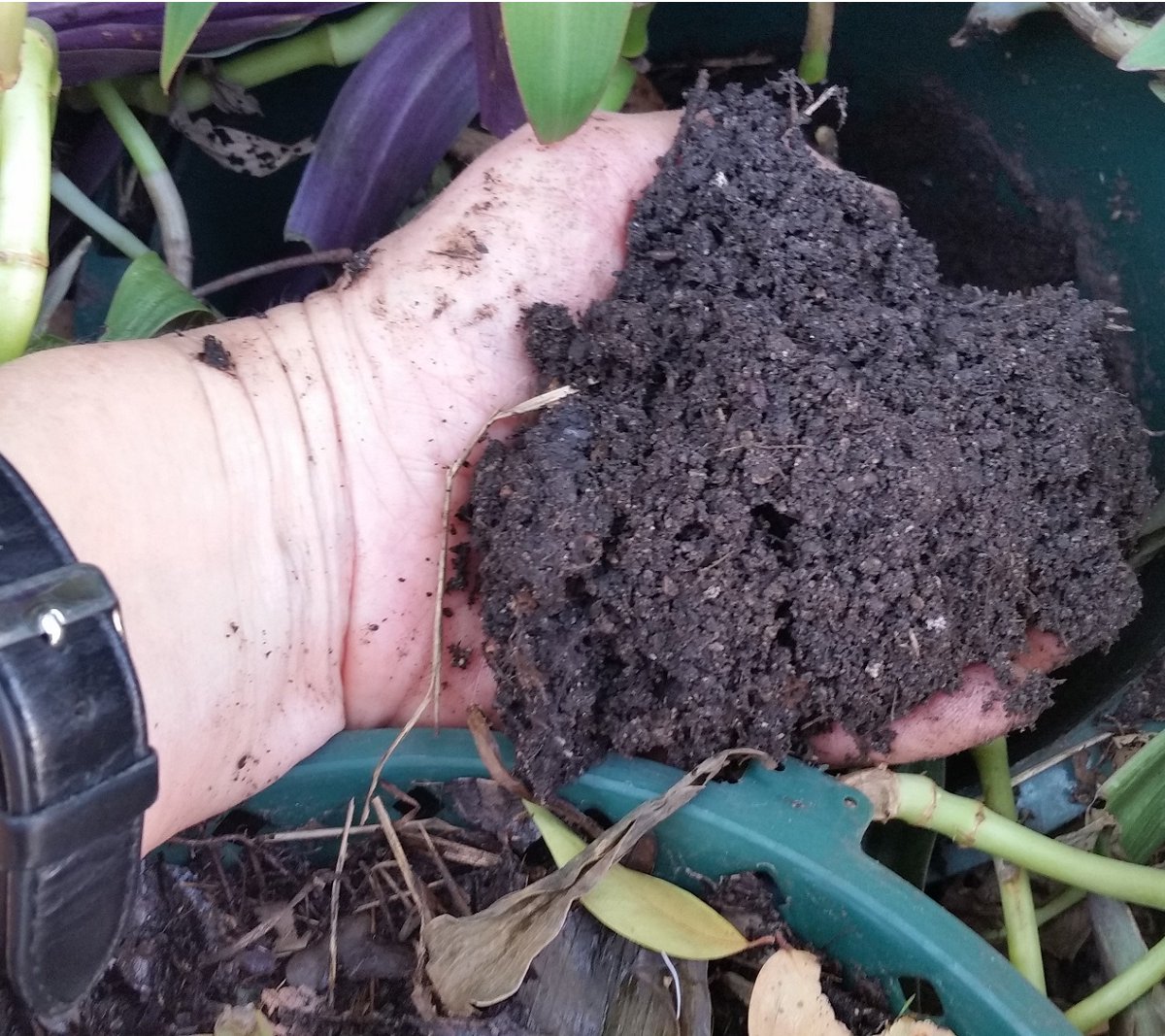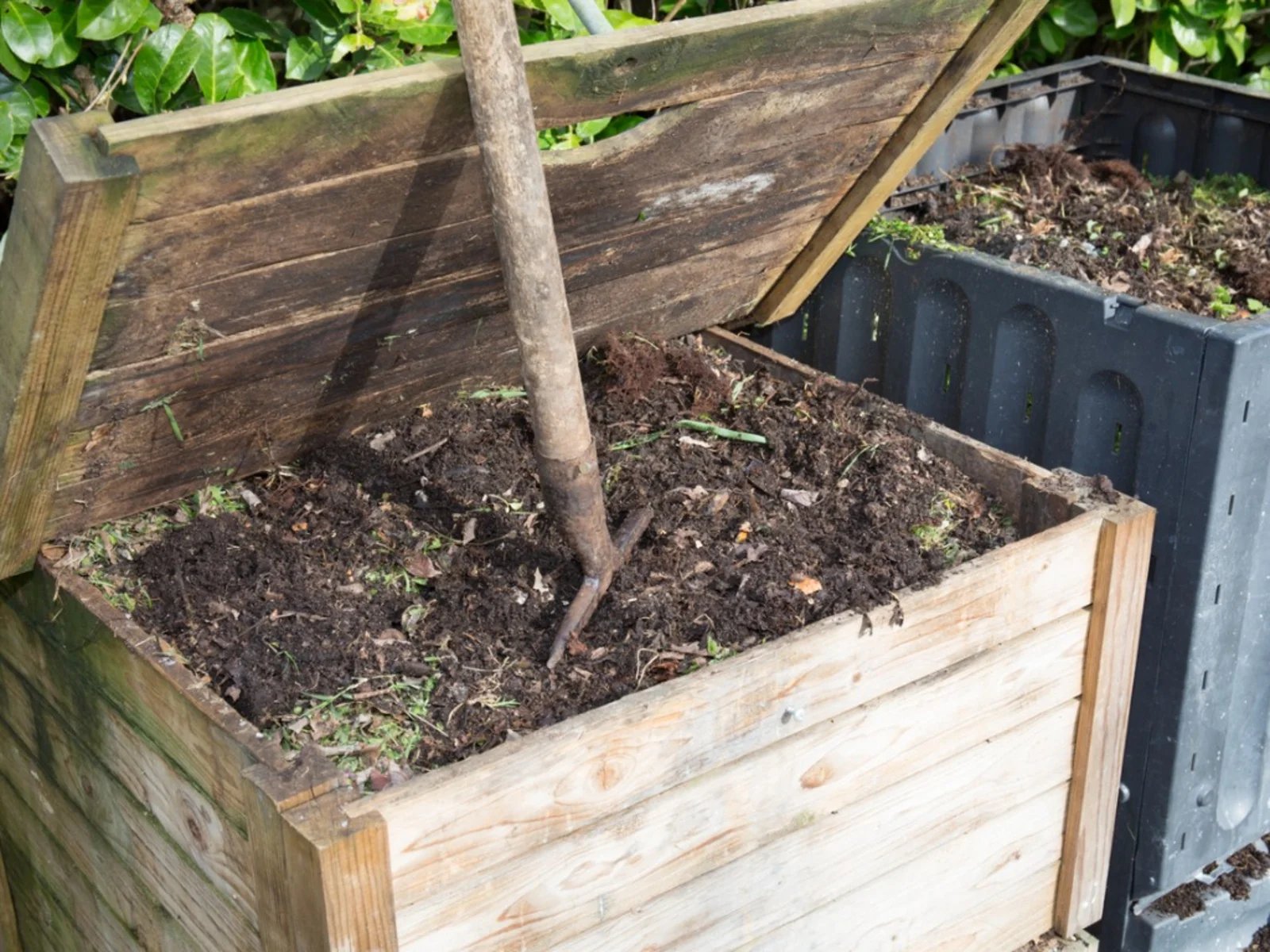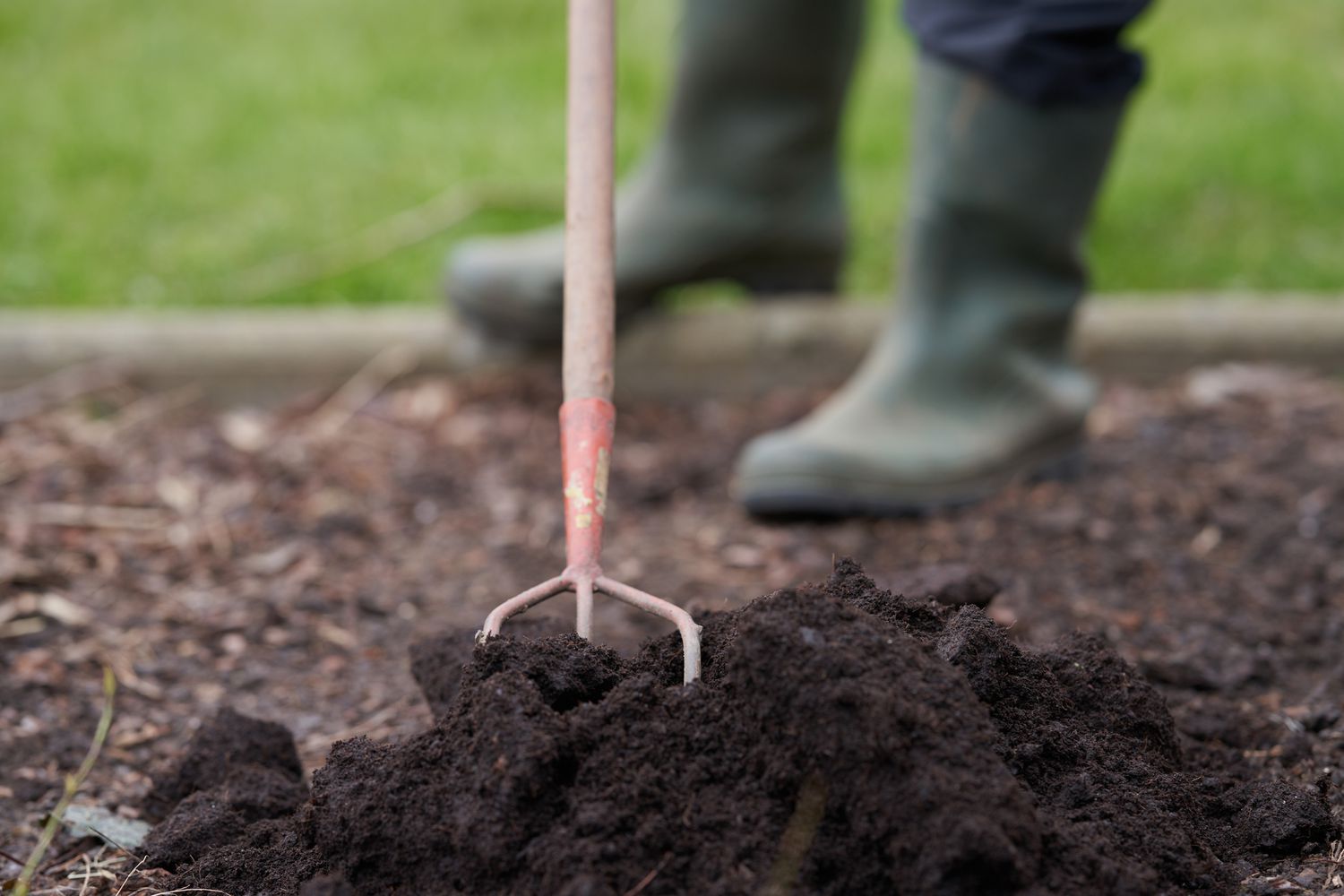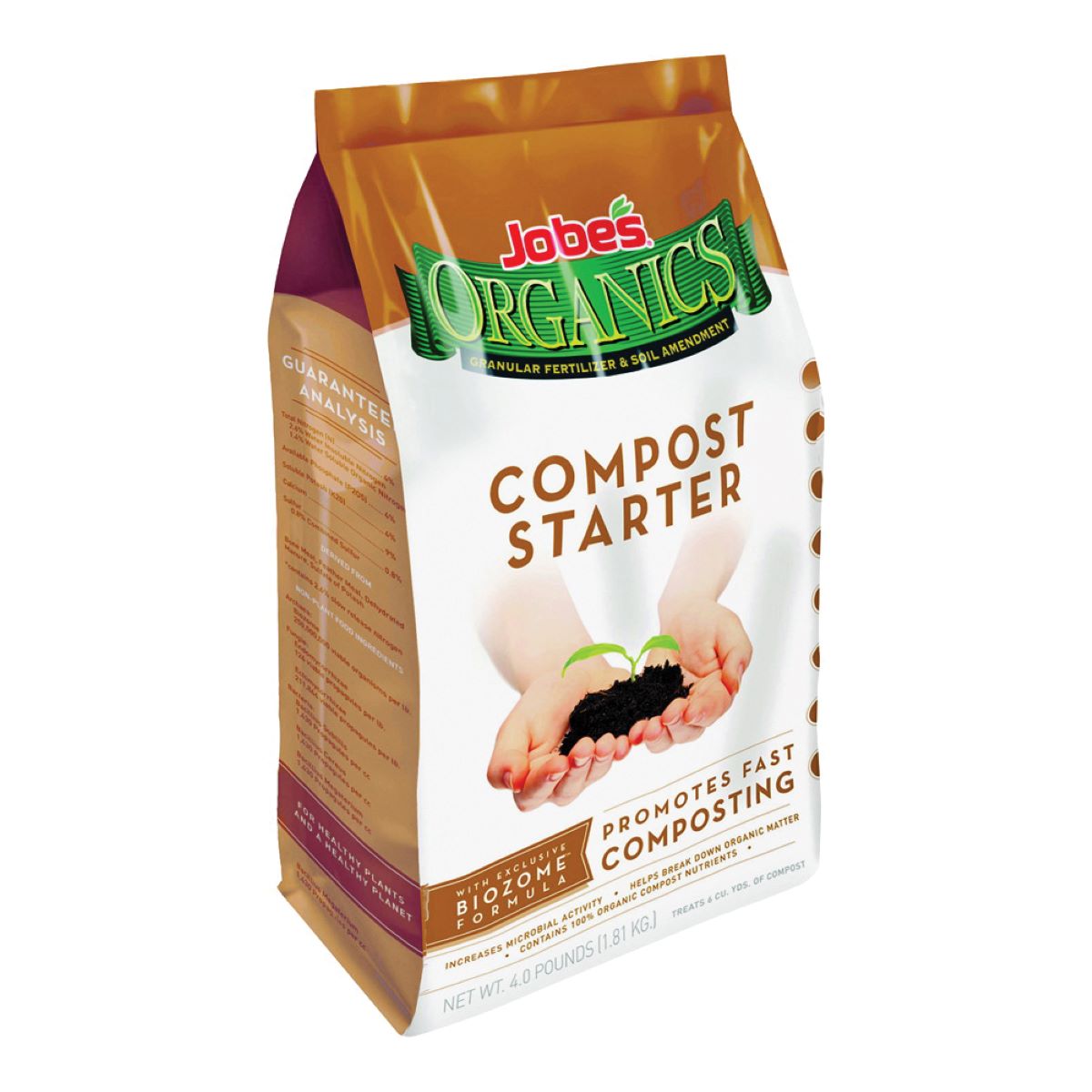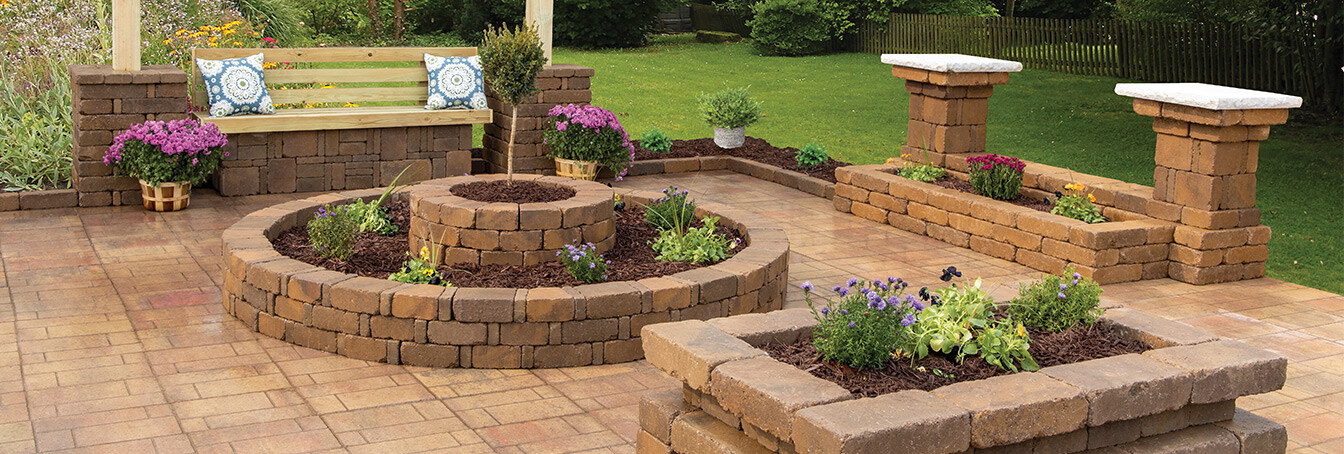Home>Gardening Tips and Tricks>Eco-Friendly Gardening>What Are The Brown Materials For Compost


Eco-Friendly Gardening
What Are The Brown Materials For Compost
Modified: January 22, 2024
Learn about the eco-friendly gardening practice of composting with brown materials to enhance soil health and reduce waste. Find out how to properly use brown material for compost.
(Many of the links in this article redirect to a specific reviewed product. Your purchase of these products through affiliate links helps to generate commission for Chicagolandgardening.com, at no extra cost. Learn more)
Table of Contents
Introduction
Welcome to the world of eco-friendly gardening! In an era where sustainability and environmental consciousness are at the forefront, more and more people are turning to eco-friendly practices, including the use of compost in their gardens. Composting is an excellent way to reduce waste, enrich the soil, and promote the growth of healthy plants without relying on synthetic fertilizers. One essential component of composting is the brown material. In this article, we will explore what brown material is, its significance in composting, different types of brown materials, and how to incorporate them effectively into your compost pile.
Brown material, also known as carbon-rich material, is a key ingredient in the composting process. It serves as a source of carbon, which is necessary for the breakdown of organic matter and the production of nutrient-rich compost. Brown material provides structure to the compost pile, aids in moisture retention, and helps balance the nitrogen-rich green material. Understanding the importance of brown material and learning how to incorporate it into your composting routine will allow you to create high-quality compost that will benefit your garden and the environment.
There are several types of brown materials that are suitable for composting, ranging from common household waste to yard trimmings. By utilizing a diverse range of brown materials, you will ensure a balanced compost pile and increase the diversity of nutrients in your final compost product. Examples of brown materials include dried leaves, straw, shredded newspaper, cardboard, and woodchips. Each has its own unique characteristics and benefits in the composting process.
To effectively incorporate brown material into your compost pile, proper layering and a balance of green materials is crucial. The correct ratio of carbon-rich brown material to nitrogen-rich green material is typically around 3:1 or 4:1. This balance ensures that the composting process occurs efficiently and prevents issues such as odor, pest infestation, and slow decomposition.
In the following sections, we will dive deeper into the types of brown materials suitable for composting, provide examples of each, and offer tips for incorporating brown material effectively into your compost pile. Whether you are a novice or experienced in eco-friendly gardening, understanding the importance of brown material in composting will help you take your composting efforts to the next level, resulting in nutrient-rich soil and thriving, sustainable gardens.
What Is Brown Material?
Brown material, also known as carbon-rich material, is an essential component in the composting process. It refers to organic waste that is rich in carbon and provides a source of nutrients for beneficial microbes in the compost pile. Brown material acts as a bulking agent, helping to create airflow and regulate moisture levels within the compost pile.
When it comes to composting, balance is key. Brown material serves as a counterbalance to the nitrogen-rich green material, such as vegetable scraps and grass clippings. Carbon and nitrogen are the building blocks of organic matter, and achieving the right ratio of carbon to nitrogen is crucial for successful composting.
Typically, brown material has a higher carbon-to-nitrogen ratio compared to green material. It provides a source of energy for the microorganisms responsible for breaking down organic matter. Brown material helps create a stable, well-aerated compost pile that supports the growth of beneficial bacteria, fungi, and other decomposers.
Examples of brown material include dried leaves, straw, shredded newspaper, cardboard, woodchips, sawdust, and dried grass. These materials are readily available, often free or inexpensive, and can be sourced from your own yard, garden, or even your kitchen.
Brown material should ideally be dry or semi-dry, as excessive moisture can lead to a compacted and smelly compost pile. The moisture content of the compost pile should be similar to a damp sponge. Adding brown material in appropriate proportions helps maintain the moisture balance and prevents the compost pile from becoming too wet or too dry.
The decomposition process of brown material is slower compared to green material, but it plays a vital role in creating a well-balanced and nutrient-rich compost. Incorporating a variety of brown materials in your compost pile ensures a diverse mix of nutrients and helps create a compost that is beneficial for your plants and the environment.
Now that we understand what brown material is and its importance in composting, let’s explore the different types of brown materials you can utilize in your compost pile to create nutrient-rich, eco-friendly compost.
Why Is Brown Material Important for Compost?
Brown material is a vital component of composting due to its numerous benefits. It serves multiple purposes in the composting process and contributes to the overall quality of the finished compost. Understanding why brown material is important will help you appreciate its role and make informed decisions when incorporating it into your compost pile.
1. Carbon Source: Brown material, being carbon-rich, provides a crucial source of carbon for the composting process. Carbon is an essential element that microbes require for energy and growth. Without sufficient carbon, the decomposition process slows down, and the compost pile may become compacted and unpleasant-smelling.
2. Structural Support: Brown material helps create structure within the compost pile. Its fibrous and bulky nature allows for better airflow and prevents the pile from becoming too dense. Good airflow facilitates the movement of oxygen, which is necessary for aerobic decomposition. The presence of brown material ensures that the compost pile remains loose and well-aerated, promoting efficient decomposition.
3. Moisture Retention: Another crucial role of brown material is its ability to help retain moisture in the compost pile. Due to its absorbent properties, brown material absorbs and retains water, preventing the compost from drying out too quickly. This moisture retention ensures that the compost pile remains adequately moist, creating an optimal environment for the organisms involved in the decomposition process.
4. Nutrient Balance: Brown material aids in balancing the nutrient ratio in the compost pile. It is important to achieve the right balance between carbon-rich brown material and nitrogen-rich green material. The ideal carbon-to-nitrogen ratio is around 25-30:1. When the ratio is balanced, the decomposition process occurs at an optimal rate, preventing the loss of valuable nutrients and minimizing the risk of unpleasant odors.
5. Long-Lasting Nutrient Release: Brown material, being slower to decompose compared to green material, provides a long-lasting source of nutrients for your plants. As the brown material breaks down over time, nutrients are released gradually into the soil, providing sustained nourishment for your plants. This slow-release of nutrients ensures a continuous supply of essential elements for healthy plant growth.
By incorporating brown material into your compost pile, you create a well-rounded and balanced environment for decomposition to occur. The carbon-rich brown material provides energy, structure, moisture retention, and nutrient balance, resulting in high-quality compost that enriches your soil and promotes healthy, thriving plants.
Types of Brown Material for Compost
There are several types of brown materials that are suitable for composting, each with its own unique characteristics and benefits. Incorporating a variety of brown materials into your compost pile helps create a well-balanced and nutrient-rich mixture. Here are some common types of brown materials you can utilize:
1. Dried Leaves: Fallen leaves are one of the most readily available sources of brown material. They are easily collected from your yard or nearby parks during the autumn season. Shred the leaves to facilitate decomposition and create a more compact pile. 2. Straw: Straw, which is the dried stalks of grain crops like wheat, oats, or rice, is an excellent source of brown material. It is lightweight, easy to handle, and adds bulk to your compost pile. Straw also provides good aeration and helps maintain moisture levels. 3. Shredded Newspaper: Instead of throwing away old newspapers, shred them into strips and add them to your compost pile. Newspapers are an effective carbon source and contribute to the structural integrity of the compost. 4. Cardboard: Cardboard boxes or packaging materials can be torn into smaller pieces and added to your compost pile. They serve as a great carbon-rich brown material with their high fiber content. 5. Woodchips: Woodchips or sawdust from untreated wood are excellent sources of brown material. They decompose slowly, providing a long-lasting source of carbon in your compost. Incorporating woody materials also helps maintain airflow within the compost pile. 6. Dried Grass Clippings: If you have a lawn, collect and dry the grass clippings before adding them to your compost. Dried grass clippings are rich in carbon and contribute to the brown material content. 7. Straw Bedding: If you have access to straw bedding from animal shelters or farms, it can be a valuable addition to your compost pile. It has a high carbon-to-nitrogen ratio and adds structure and absorbency to the compost. 8. Coffee Grounds: Although coffee grounds are often considered a green material due to their high nitrogen content, they can also be used as a brown material when dried. Spread them out in a thin layer and allow them to dry before adding to the compost pile. Remember, proper moisture balance and a balanced ratio of brown material to green material are key. Aim for a carbon-to-nitrogen ratio of around 25-30:1 to ensure optimal decomposition and nutrient availability within the compost pile. By diversifying your sources of brown material, you can create nutrient-rich compost that will benefit your plants and the environment.
Examples of Brown Material for Compost
When it comes to composting, there is a wide variety of brown materials that you can incorporate into your compost pile. These materials provide an excellent source of carbon and contribute to the overall quality of the compost. Here are some examples of brown materials that are ideal for composting:
1. Dried Leaves: Fallen leaves are a readily available and abundant source of brown material. Oak leaves, maple leaves, and other deciduous tree leaves work well in composting. Collect them during the autumn season, shred them, and add them to your compost pile. 2. Straw: Straw, the stalks of grain crops like wheat, oats, or rice, is commonly used as livestock bedding but can also be utilized as brown material in composting. It is lightweight and easy to handle. Straw provides excellent structure to the compost pile and helps maintain proper airflow, preventing compaction. 3. Shredded Newspaper: Instead of throwing away old newspapers, shred them into small strips and add them to your compost pile. Newspaper acts as a good source of carbon and adds texture to the compost. 4. Cardboard: Cardboard packaging material or cardboard boxes can be torn into smaller pieces and added to the compost pile. The high fiber content in cardboard makes it an excellent brown material choice. Make sure to remove any tape or labels before adding it to the compost. 5. Woodchips: Woodchips or sawdust from untreated wood serve as a long-lasting source of carbon in the compost pile. They provide both structure and aeration to the compost. Avoid using woodchips or sawdust from treated wood, as they may contain harmful chemicals. 6. Dried Grass Clippings: If you have a lawn and regularly mow it, save the clippings and dry them before adding them to your compost pile. Dried grass clippings are rich in carbon and can be used as brown material. It’s important to dry the clippings before adding them to prevent them from clumping together and creating a slimy compost pile. 7. Straw Bedding: If you have access to straw bedding from animal shelters or farms, it can be a valuable addition to your compost. It provides a good balance of carbon and adds structure to the compost pile. 8. Coffee Grounds: While coffee grounds are often considered a green material due to their nitrogen content, they can also be used as a brown material when dried. Spread them out in a thin layer and allow them to dry, then incorporate them into the compost pile. Coffee grounds add both carbon and nitrogen to the mix. These are just a few examples of brown materials that can be used in composting. Remember to maintain a good balance between brown material and green material in your compost pile. By incorporating a variety of brown materials, you will ensure a diverse mix of organic matter and create nutrient-rich compost for your plants.
How to Use Brown Material in Compost
Using brown material effectively in your compost pile is crucial for achieving optimal decomposition and creating nutrient-rich compost. Here are some steps on how to incorporate brown material into your compost:
1. Shred or Chop: Before adding brown materials to your compost pile, shred or chop them into smaller pieces. This increases the surface area and speeds up the decomposition process. Shredding or chopping also helps create a more uniform mixture in the compost pile. 2. Layering: Start by layering your compost pile with a thin layer of brown material, such as dried leaves or straw. This provides a base for the composting process and helps create structure within the pile. Follow each layer of brown material with a layer of green material, such as vegetable scraps or grass clippings, to maintain the proper balance of carbon and nitrogen. 3. Moisture Management: Ensure that your compost pile remains moist but not overly wet. Brown material absorbs moisture, so it’s essential to monitor the moisture levels. Water the pile if it appears dry, and mix the compost periodically to distribute the moisture evenly throughout. 4. Aeration: Brown materials, particularly wood chips or cardboard, provide necessary airflow within the compost pile. Ensure that there is sufficient airspace within the pile to allow oxygen to flow. This helps promote aerobic decomposition and discourages the growth of anaerobic bacteria, which can create unpleasant odors. 5. Mixing and Turning: Regularly mix or turn your compost pile to incorporate the brown material and aid in the decomposition process. This helps distribute moisture, air, and heat evenly, ensuring uniform decomposition and preventing matting or clumping of the materials. 6. Gradual Addition: Add brown materials gradually to your compost pile as they become available. This prevents the pile from becoming overloaded with one type of material and helps maintain the proper carbon-to-nitrogen ratio. Continuously adding brown materials, along with green materials, helps ensure a balanced and consistent decomposition process. 7. Cover the Pile: Use a covering such as a tarp or layer of straw to cover your compost pile. This helps retain moisture, regulate temperature, and protect the pile from excessive rainfall. It also prevents excessive drying and maintains an ideal environment for decomposition. 8. Patience and Monitoring: Composting takes time, and the decomposition process varies depending on factors such as temperature and the mix of materials. Be patient and monitor the progress of your compost pile regularly. Adjust the ratio of brown to green materials if necessary to maintain a healthy and productive composting process. By following these guidelines, you can effectively utilize brown material in your compost pile. The brown material provides carbon, structure, and airflow, all of which contribute to the breakdown of organic matter and the creation of nutrient-rich compost. Remember to maintain a balance between brown and green materials, monitor moisture levels, and regularly turn the pile for a successful composting process.
Tips for Incorporating Brown Material in Compost
Incorporating brown material into your compost pile is essential for creating a balanced and nutrient-rich compost. Here are some tips to help you effectively utilize brown material in your composting efforts:
1. Balance the Carbon-to-Nitrogen Ratio: Maintain the proper carbon-to-nitrogen ratio in your compost pile. Brown materials have a higher carbon content, so it’s important to ensure a good balance with nitrogen-rich green materials. Aim for a ratio of approximately 25-30 parts carbon to 1 part nitrogen. This balance supports the decomposition process and results in high-quality compost. 2. Shred or Chop Brown Materials: Shred or chop brown materials, such as dried leaves, straw, or cardboard, into smaller pieces before adding them to the compost pile. This increases the surface area, accelerates decomposition, and promotes uniform mixing with other compost materials. 3. Add Brown Material in Thin Layers: Layer brown material in thin layers within your compost pile. Avoid adding large clumps or thick layers of brown material, as this can cause compaction and hinder airflow. Alternating thin layers of brown material with green material helps maintain a well-aerated compost pile. 4. Mix and Turn the Compost Pile: Regularly mixing and turning the compost pile helps distribute the brown material throughout the pile and ensures even decomposition. Use a garden fork or compost turning tool to gently mix the materials, incorporating the brown material into the existing pile. This helps maintain ideal moisture levels and prevents clumping. 5. Manage Moisture Levels: Brown material has the ability to absorb moisture, so it’s important to monitor and manage moisture levels in your compost pile. Aim for a moist but not overly wet environment. If the pile becomes too dry, water it lightly. If it becomes too wet, add more brown material or turn the pile to improve aeration. 6. Use a Variety of Brown Materials: Incorporate a diverse range of brown materials to enhance the nutrient content and texture of your compost. Combine materials such as dried leaves, straw, shredded newspaper, cardboard, and woodchips. Each material brings different benefits and contributes to a well-rounded compost product. 7. Avoid Adding Diseased or Pesticide-Treated Materials: Be cautious about adding brown materials that are diseased or have been treated with pesticides. This can potentially introduce harmful pathogens or chemicals into your compost pile. Stick to using organic and untreated brown materials to maintain the integrity of your compost. 8. Consider Seasonal Availability: Take advantage of seasonal availability when incorporating brown materials into your compost. For example, collect fallen leaves during the autumn season or use straw from grain harvests. Utilizing readily available brown materials can help reduce waste and improve the sustainability of your composting practices. Incorporating brown material effectively in your compost pile is key to creating nutrient-rich soil amendments for your garden. Following these tips will help you maintain a well-balanced compost pile, promote decomposition, and produce high-quality compost that will nourish your plants and support a healthy, sustainable garden.
Conclusion
Incorporating brown material into your composting routine is essential for creating nutrient-rich compost and practicing eco-friendly gardening. Brown material, with its carbon-rich nature, provides structure, aids in moisture retention, and balances the nitrogen-rich green material in your compost pile. By understanding the importance of brown material and following the tips provided, you can effectively utilize a variety of brown materials to create a well-balanced and productive compost pile.
From dried leaves and straw to shredded newspaper and cardboard, there is a wide range of brown materials available for composting. Each material brings its unique benefits and contributes to the overall success of the composting process. Shredding or chopping brown materials into smaller pieces helps accelerate decomposition and create a more uniform mixture. Layering thin alternating layers of brown material with green material promotes optimal decomposition and airflow.
Managing moisture levels is crucial when incorporating brown material into your compost pile. Maintaining a moist, but not overly wet environment, ensures the efficient breakdown of organic matter. Regularly mixing and turning the compost pile helps distribute the brown material and maintains ideal moisture and aeration levels.
It’s important to use a variety of brown materials in your compost to enhance nutrient content and texture. By collecting fallen leaves, utilizing straw, shredding newspapers, and using woodchips, you can create a well-rounded compost product. Avoid adding diseased or pesticide-treated materials to preserve the integrity of your compost and support a healthy garden ecosystem.
By incorporating these practices into your composting routine, you can benefit from nutrient-rich compost that improves soil fertility, enhances plant growth, and reduces the need for synthetic fertilizers. Additionally, composting with brown material helps reduce waste, promotes sustainability, and contributes to a healthier environment.
So, as you embark on your eco-friendly gardening journey, remember the importance of brown material in composting. Experiment with different types of brown materials, be mindful of carbon-to-nitrogen ratios, and always strive for a balanced and well-maintained compost pile. By doing so, you’ll not only nourish your garden but also make a positive impact on the planet.
